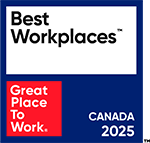
Article
How a customer-first mindset can help public organizations keep their promises to Canadians
October 21, 2019
It’s election time in Canada, which means political parties are making every effort to demonstrate that they are the ones with Canadians’ best interests at heart. Elections affect all citizens on a personal level; but for the government agencies that help run our society, promises made on the campaign trail can impact the way they will operate after the election— especially if the new government brings forward new priorities.
For both federal politicians and the institutions working to implement their visions, balancing frequently changing priorities can feel like an insurmountable challenge. At Level5, we believe that all of these stakeholders can cut through this complexity by applying a customer-first mindset.
A CX strategy can help public companies align their priorities
All organizations, public and private, struggle to effectively manage stakeholder needs. In almost all cases, public sector organizations have a much wider base of stakeholders than private companies. To make matters more difficult, public sector companies are often required to meet these various needs while managing tight budgets that are highly scrutinized.
So how can public enterprises manage competing priorities with limited resources? By focusing their efforts on what matters most to voters, patients, or taxpayers. Just like their private counterparts, public sector companies can use a customer-first mindset to transform the way they make decisions for society’s greater good.
Challenges of operating in a multi-stakeholder environment
In our work, we have identified some thematic challenges that many public sector companies face:
- Divergent priorities. Government entities have to satisfy disparate internal stakeholders who often have conflicting views on how to make the most of their time and resources. By aligning around the idea that the end user should be at the center of all decision-making, public organizations can cut through the noise by prioritizing what the end user believes is most important, not the competing priorities of different internal stakeholders. In other words, there is a cascade of priorities to be met, but they start with the public promise or ask.
- Limited resources for satisfying large groups of users. Intense public scrutiny and recurrent budget cuts necessitate government agencies to make contradictory decisions and decide between competing priorities. They must meet people’s needs on the one hand and satisfy their appetite for tighter budgets on the other. Understanding the moments that matter most (“Moments of Truth”) within the customer journey enables not only prioritization of time, but also allocation of resources—both capital and people. Resources should be focused on the areas that deliver the greatest value to the end user.
- Demonstrating impact as a direct result of initiatives. The complexity of the stakeholder environment in a publicly operated organization is connected to the breadth of responsibility within it—public organizations are typically expected to generate value for everyone in their jurisdiction. However, this means it is often difficult to demonstrate that a meaningful impact has been achieved. Solutions are rarely a ‘silver bullet’ that meet every stakeholder group’s divergent wants and needs, and are therefore often ignored or unrecognized by select stakeholders. Once Moments of Truth are uncovered and well-understood, public organizations can track performance metrics and user feedback at each moment to paint a clear picture of how they are progressing against what matters most to the user.
A CX method and positive consequences for public organizations
Don’t take our word for it when we say that a CX strategy can help public sector organizations satisfy their stakeholders; data supports the notion that a customer-first mindset leads to positive outcomes for public sector companies:

Source: D’Emidio, Tony, et al. The Global Case for Customer Experience in Government. McKinsey & Company, Sept. 2019
A CX method is a valuable tool for identifying what matters most to your customers, however varied they may be. Once you understand your customers’ needs, you can align your organization’s activities with those needs and agree on where to improve. The best part is that this is a true win-win methodology: customers have their needs met leading to higher levels of satisfaction, and agencies have the tiebreaker they need when striving to deliver value in a complex multi-stakeholder environment.
Reach out to Garnet Tosswill at GTosswill@Level5strategy.com to find out more about Level5’s customer experience practice.


